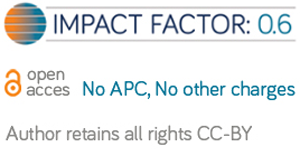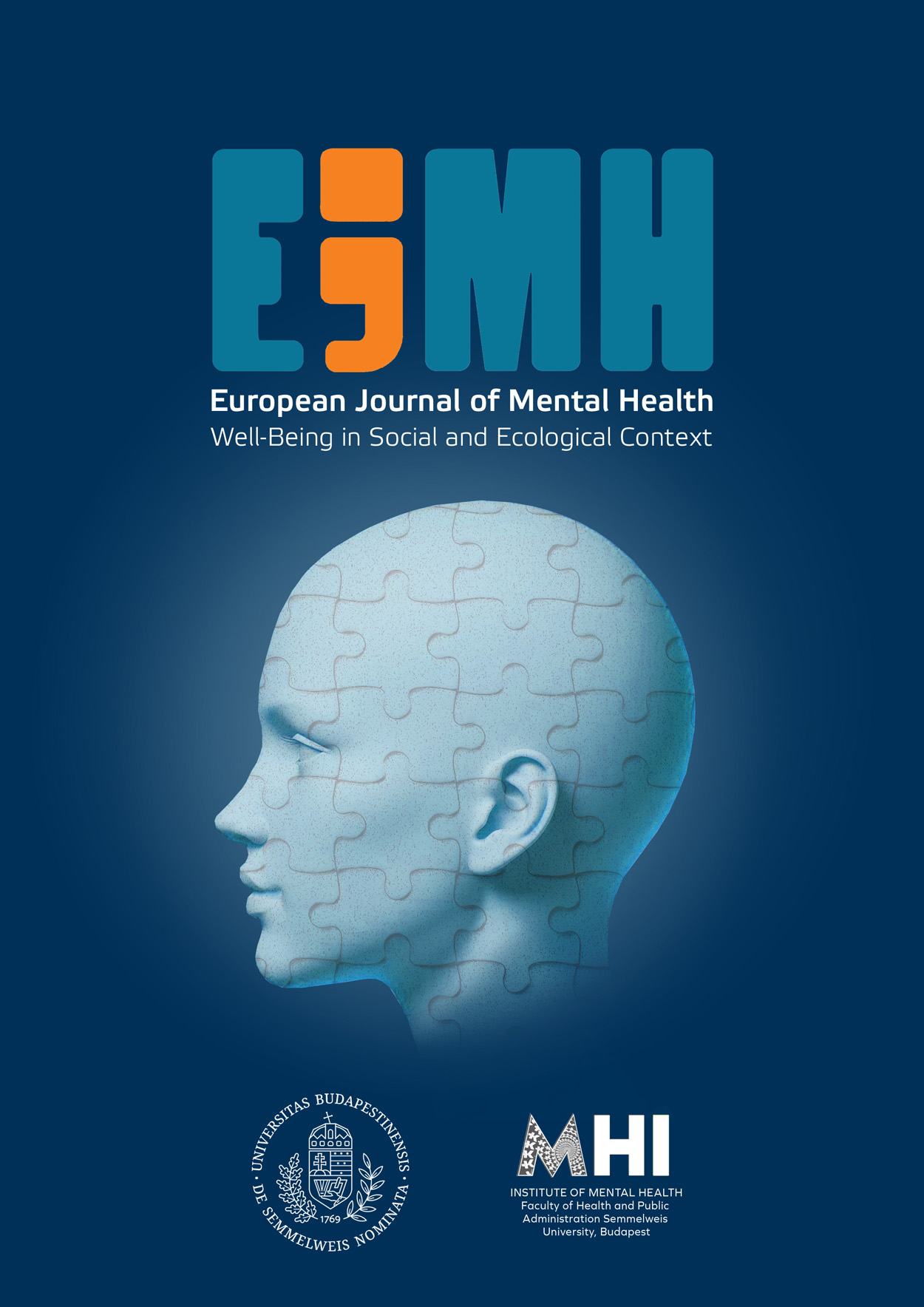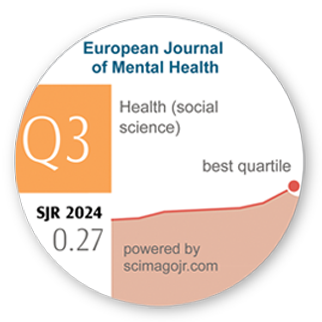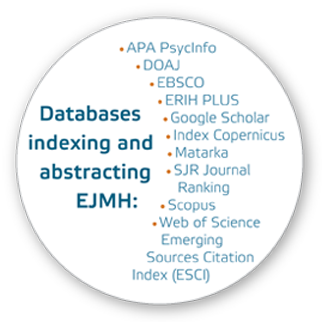Necessary Condition Analysis on the Relationship between Fear of Missing Out, Social Networking Addiction, and Psychological Well-Being
DOI:
https://doi.org/10.5708/EJMH.20.2025.0042Keywords:
psychological well-being, fear of missing out, social networking addiction, necessary condition analysis, early adultsAbstract
Introduction: With the growth of technology and increasing accessibility to various platforms, concerns surrounding the impact of technology on individuals’ well-being are also on the rise. Researchers are making significant efforts to understand this constantly evolving phenomenon.
Aims: The current study aims to investigate the interrelationships between fear of missing out (FoMO), social networking addiction (SNA), and psychological well-being (PWB), as well as the relation between SNA scores and sociodemographic variables.
Methods: This study employs a recently developed data analysis approach called Necessary Condition Analysis (NCA) to observe essential conditions within SNA, PWB, and FoMO. The study’s main objective is to determine whether low/high levels of FoMO and SNA correspond to high/low levels of PWB. To address this objective, a convenience sample of 449 participants aged 17–40 years was selected. Statistical analyses were conducted using the NCA package to investigate the relationships between these variables. A chi-square test was also performed to assess the associations between sociodemographic variables and probable SNA cases based on the established cut-off scores.
Results: The results indicated that high levels of FoMO are necessary for high levels of SNA (Effect Size (d) = .15 and p < .001), and high levels of PWB were found to be necessary for low levels of FoMO (d = .23 and p < .001) and SNA (d = .16 and p = .01) and vice versa. It was also observed associations between the demographic variables of gender, marital status, and residence, and SNA.
Conclusions: This research contributes to the current discussions concerning the influence of social media on personal well-being and the field of media psychology. The findings obtained can help in guiding the development of interventions and strategies aimed at promoting psychological welfare within digitally interconnected communities.
References
Agnihotri, S., & Ravi Shanker, D. (2023). Association between cognitive distortions and problematic internet use among students during the COVID-19 pandemic. Children and Youth Services Review, 155, 1–9.
https://doi.org/10.1016/j.childyouth.2023.107214
Andreassen, C. S. (2015). Online social network site addiction: A comprehensive review. Current Addiction Reports, 2(2), 175–184.
https://doi.org/10.1007/s40429-015-0056-9
Aparicio-Martínez, P., Ruiz-Rubio, M., Perea-Moreno, A. J., Martínez-Jiménez, M. P., Pagliari, C., Redel-Macías, M. D., & Vaquero-Abellán, M. (2020). Gender differences in the addiction to social networks in the Southern Spanish university students. Telematics and Informatics, 46, Article 101304.
https://doi.org/10.1016/j.tele.2019.101304
Arya, B., Sharma, S., & Kumar, H. (2021). Fear of missing out, social media use, and psychological well-being among university students. International Journal of Cyber Behavior, Psychology and Learning, 11(4), 1–9.
https://doi.org/10.4018/IJCBPL.288496
Bacaksız, S., Özsoy, İ., Teğin, T., Bıçaksız, P., & Tekeş, B. (2023). Anonymity as a moderator of the relationship between FoMO (fear of missing out) and psychological well-being. Psychological Reports, 126(5), 2303–2321.
https://doi.org/10.1177/00332941231180115
Bhatiasevi, V. (2024). The uses and gratifications of social media and their impact on social relationships and psychological well-being. Frontiers in Psychiatry, 15, Article 1260565.
https://doi.org/10.3389/fpsyt.2024.1260565
Blackwell, D., Leaman, C., Tramposch, R., Osborne, C., & Liss, M. (2017). Extraversion, neuroticism, attachment style and fear of missing out as predictors of social media use and addiction. Personality and Individual Differences, 116, 69–72.
https://doi.org/10.1016/j.paid.2017.04.039
Bottaro, R., Valenti, G. D., & Faraci, P. (2024). Internet addiction and psychological distress: Can social networking site addiction affect body uneasiness across gender? A mediation model. Europe's Journal of Psychology, 20(1), 41–62.
https://doi.org/10.5964/ejop.10273
Chen, A. (2019). From attachment to addiction: The mediating role of need satisfaction on social networking sites. Computers in Human Behavior, 98, 80–92.
https://doi.org/10.1016/j.chb.2019.03.034
Chidambaram, V., Shanmugam, K., & Parayitam, S. (2023). Parental neglect and emotional well-being among adolescent students from India: Social network addiction as a mediator and gender as a moderator. Behaviour & Information Technology, 42(7), 869–887
https://doi.org/10.1080/0144929X.2022.2046164
Dhir, A., & Tsai, C. C. (2017). Understanding the relationship between intensity and gratifications of Facebook use among adolescents and young adults. Telematics and Informatics, 34(4), 350–364.
https://doi.org/10.1016/j.tele.2016.08.017
Dul, J. (2016). Necessary condition analysis (NCA) logic and methodology of ‘necessary but not sufficient’ causality. Organisational Research Methods, 19(1), 10–52.
https://doi.org/10.1177/1094428115584005
Dul, J. (2021). Advances in necessary condition analysis. Guilford Press.
Dul, J. (2024). Necessary condition analysis (R package version 4.0.2.) [Computer software]. CRAN.
https://cran.r-project.org/web/packages/NCA/
Elhai, J. D., Rozgonjuk, D., Yildirim, C., Alghraibeh, A. M., & Alafnan, A. A. (2019). Worry and anger are associated with latent classes of problematic smartphone use severity among college students. Journal of Affective Disorders, 246, 209–216.
https://doi.org/10.1016/J.JAD.2018.12.047
Faul F., Erdfelder E., Lang A. G., Buchner A. (2007). G*Power 3: A flexible statistical power analysis program for the social, behavioral, and biomedical sciences. Behavior Research Methods, 39(2), 175–191.
https://doi.org/10.3758/bf03193146
Fioravanti, G., Casale, S., Benucci, S. B., Prostamo, A., Falone, A., Ricca, V., & Rotella, F. (2021). Fear of missing out and social networking sites use and abuse: A meta-analysis. Computers in Human Behavior, 122, Article 106839.
https://doi.org/10.1016/j.chb.2021.106839
Griffiths, M. (2005). A ‘components’ model of addiction within a biopsychosocial framework. Journal of Substance Use, 10(4), 191–197.
https://doi.org/10.1080/14659890500114359
Groenestein, E., Willemsen, L., van Koningsbruggen, G. M., Ket, H., & Kerkhof, P. (2024). The relationship between fear of missing out, digital technology use, and psychological well-being: A scoping review of conceptual and empirical issues. PLoS ONE, 19(10), e0308643.
https://doi.org/10.1371/journal.pone.0308643
Haripriya, J., Shruthi, S., & Thaarikaa, D. S. (2024). A study on social media addiction among adolescents. International Journal of Indian Psychȯlogy, 12(4).
Hattingh, M., Dhir, A., Ractham, P., Ferraris, A., & Yahiaoui, D. (2022). Factors mediating social media-induced fear of missing out (FoMO) and social media fatigue: A comparative study among Instagram and Snapchat users. Technological Forecasting and Social Change, 185, Article 122099.
https://doi.org/10.1016/j.techfore.2022.122099
Hayran, C., & Anik, L. (2021). Well-being and fear of missing out (FoMO) on digital content in the time of COVID-19: A correlational analysis among university students. International Journal of Environmental Research and Public Health, 18(4), Article 1974.
https://doi.org/10.3390/ijerph18041974
Hjetland, G. J., Schønning, V., Hella, R. T., Veseth, M., & Skogen, J. C. (2021). How do Norwegian adolescents experience the role of social media in relation to mental health and well-being: A qualitative study. BMC Psychology, 9(1), Article 78.
https://doi.org/10.1186/s40359-021-00582-x
Hylkilä, K., Männikkö, N., Castrén, S., Mustonen, T., Peltonen, A., Konttila, J., Männistö, M. & Kääriäinen, M. (2023). Association between psychosocial well-being and problematic social media use among Finnish young adults: A cross-sectional study. Telematics and Informatics, 81, Article 101996.
https://doi.org/10.1016/j.tele.2023.101996
Ifinedo, P. (2016). Applying uses and gratifications theory and social influence processes to understand students’ pervasive adoption of social networking sites: Perspectives from the Americas. International Journal of Information Management, 36(2), 192–206.
https://doi.org/10.1016/j.ijinfomgt.2015.11.007
International Telecommunication Union. (2023). Measuring digital development: Facts and figures 2023.
https://www.itu.int/hub/publication/d-ind-ict_mdd-2023-1/
Jahagirdar, V., Sequeira, L. A., Kinattingal, N., Roohi, T. F., Alshehri, S., Shakeel, F., & Mehdi, S. (2024). Assessment of the impact of social media addiction on psychosocial behaviour like depression, stress, and anxiety in working professionals. BMC Psychology, 12(1), Article 352.
https://doi.org/10.1186/s40359-024-01850-2
KANTAR & IAMAI (2024). Internet in India.
https://www.iamai.in/sites/default/files/research/Kantar_%20IAMAI%20report_2024_.pdf
Kardefelt-Winther, D. (2014). A conceptual and methodological critique of internet addiction research: Towards a model of compensatory internet use. Computers in Human Behavior, 31, 351–354.
https://doi.org/10.1016/j.chb.2013.10.059
Katz, E., Blumler, J. G., & Gurevitch, M. (1974). Utilisation of mass communication by the individual. In J. G. Blumler & E. Katz (Eds.), The uses of mass communications: Current perspectives on gratifications research (pp. 19–32). Sage.
Katz, E., Haas, H., & Gurevitch, M. (1973). On the use of the mass media for important things. American Sociological Review 38(2), 164–181.
https://doi.org/10.2307/2094393
Ku, Y. C., Chu, T. H., & Tseng, C. H. (2013). Gratifications for using CMC technologies: A comparison among SNS, IM, and e-mail. Computers in Human Behavior, 29(1), 226–234.
https://doi.org/10.1016/j.chb.2012.08.009
Laskar, M. H. (2023). Examining the emergence of digital society and the digital divide in India: A comparative evaluation between urban and rural areas. Frontiers in Sociology, 8, Article 1145221.
https://doi.org/10.3389/fsoc.2023.1145221
Lévesque, D., Sévigny, S., Giroux, I., & Jacques, C. (2018). Psychological vulnerability and problem gambling: The mediational role of cognitive distortions. Journal of Gambling Studies, 34, 807–822.
https://doi.org/10.1007/s10899-017-9740-0
Masthi, N. N. R., Pruthvi, S., & Mallekavu, P. (2017). A comparative study on social media addiction between public and private high school students of urban Bengaluru, India. Journal of Psychiatry, 18(2), 206–215.
Mehrotra, S., Tripathi, R., & Banu, H. (2013). Psychological well-being: Reflections on an elusive construct and its assessment. Journal of the Indian Academy of Applied Psychology, 39(2), 189–195.
Meier, A., & Reinecke, L. (2021). Computer-mediated communication, social media, and mental health: A conceptual and empirical meta-review. Communication Research, 48(8), 1182–1209.
https://doi.org/10.1177/0093650220958224
Mittal, E., & Rani, T. (2024). Uses and gratifications of social networking use: Associations with social capital and subjective well-being. Human Systems Management, 43(2), 215–233.
Nekkanti, M. R., & Datti, R. S. (2024). Exploring the key aspects of psychology on social networking sites: A bibliometric analysis. Fudan Journal of the Humanities and Social Sciences, 1–27.
https://doi.org/10.1007/s40647-024-00432-1
Patel, V. K., Chaudhary, P., Kumar, P., Vasavada, D. A., & Tiwari, D. S. (2021). A study of correlates of social networking site addiction among the undergraduate health professionals. Asian Journal of Social Health and Behavior, 4(1), 30–35.
https://doi.org/10.4103/shb.shb_1_21
Przybylski, A. K., Murayama, K., DeHaan, C. R., & Gladwell, V. (2013). Motivational, emotional, and behavioral correlates of fear of missing out. Computers in Human Behavior, 29(4), 1841–1848.
https://doi.org/10.1016/j.chb.2013.02.014
Raj, M., Bhattacherjee, S., & Mukherjee, A. (2018). Usage of online social networking sites among school students of Siliguri, West Bengal, India. Indian Journal of Psychological Medicine, 40(5), 452–457.
https://doi.org/10.4103/IJPSYM.IJPSYM_70_18
Reer, F., Tang, W. Y., & Quandt, T. (2019). Psychosocial well-being and social media engagement: The mediating roles of social comparison orientation and fear of missing out. New Media & Society, 21(7), 1486–1505.
https://doi.org/10.1177/1461444818823719
Roberts, J. A., & David, M. E. (2020). The social media party: Fear of missing out (FoMO), social media intensity, connection, and well-being. International Journal of Human-Computer Interaction, 36(4), 386–392.
https://doi.org/10.1080/10447318.2019.1646517
Ryff, C. D. (1989). Happiness is everything, or is it? Explorations on the meaning of psychological well-being. Journal of Personality and Social Psychology, 57(6), 1069–1081.
https://doi.org/10.1037/0022-3514.57.6.1069
Ryff, C. D., & Keyes, C. L. (1995). The structure of psychological well-being revisited. Journal of Personality and Social Psychology, 69(4), 719–727.
https://doi.org/10.1037/0022-3514.69.4.719
Savitri, J. A. (2019). Impact of fear of missing out on psychological well-being among emerging adulthood aged social media users. Psychological Research and Intervention, 2(2), 65–72.
http://dx.doi.org/10.21831/pri.v2i2.30363
Seabrook, E. M., Kern, M. L., & Rickard, N. S. (2016). Social networking sites, depression, and anxiety: A systematic review. JMIR Mental Health, 3(4), e5842.
https://doi.org/10.2196/mental.5842
Shahnawaz, M. G., & Rehman, U. (2020). Social networking addiction scale. Cogent Psychology, 7(1), Article 1832032.
http://dx.doi.org/10.1080/23311908.2020.1832032
Sharifinia, A., Nejati, M., Bayazi, M. H., & Motamedi, H. (2019). Investigating the relationship between addiction to mobile social networking with marital commitment and extramarital affairs in married students at Quchan Azad University. Contemporary Family Therapy: An International Journal, 41(4), 401–407.
https://doi.org/10.1007/s10591-019-09507-8
Sheinov, V. P., & Tarelkin, A. I. (2022). Vzaimosvyazi zavisimosti studentov ot sotsial’nykh setej s psikhologicheskim neblagopoluchiem [Relationships between students’ addiction to social networks and psychological distress]. Psikhologiya cheloveka v obrazovanii - Psychology in Education, 4(2), 188–204.
https://www.doi.org/10.33910/2686-9527-2022-4-2-188-204
Shin, M., Juventin, M., Chu, J. T. W., Manor, Y., & Kemps, E. (2022). Online media consumption and depression in young people: A systematic review and meta-analysis. Computers in Human Behavior, 128, Article 107129.
https://doi.org/10.1016/j.chb.2021.107129
Soraci, P., Demetrovics, Z., Bevan, N., Pisanti, R., Servidio, R., Di Bernardo, C., Chini, E., & Griffiths, M. D. (2025). FoMO and psychological distress mediate the relationship between life satisfaction, problematic smartphone use, and problematic social media use. International Journal of Mental Health and Addiction, 2025, 1–30.
https://doi.org/10.1007/s11469-024-01432-8
Stead, H., & Bibby, P. A. (2017). Personality, fear of missing out and problematic internet use and their relationship to subjective well-being. Computers in Human Behavior, 76, 534–540.
https://doi.org/10.1016/j.chb.2017.08.016
Sudheer, A., & Saligram, D. (2023). Social media use, fear of missing out and psychological well-being among young adults. International Journal of Indian Psychȯlogy, 11(2).
van der Valk, W., Sumo, R., Dul, J., & Schroeder, R. G. (2016). When are contracts and trust necessary for innovation in buyer-supplier relationships? A necessary condition analysis. Journal of Purchasing and Supply Management, 22(4), 266–277.
https://doi.org/10.1016/j.pursup.2016.06.005
We Are Social & Meltwater (2025). Digital 2025: Global overview report.
https://datareportal.com/reports/digital-2025-global-overview-report
Yang, C. C., Holden, S. M., & Ariati, J. (2021). Social media and psychological well-being among youth: The multidimensional model of social media use. Clinical Child and Family Psychology Review, 24(3), 631–650.
https://doi.org/10.1007/s10567-021-00359-z






